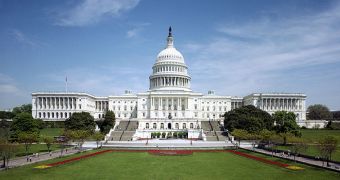At a meeting organized by the Committee on Science, Space, and Technology on Thursday, September 22, officials in Washington, DC, heard the opinions of former Apollo astronauts, a former NASA Administrator, and an esteemed MIT scientist on the course of development the agency now follows.
The purpose of the hearing was for representatives to conduct a clear analysis of the strategic goals and priorities listed for the current human space exploration program the United States follow. The program has been proposed under President Barack Obama's 2010 National Space Policy.
Congressmen and Congresswomen wanted to hear more about the importance of having direct access to low-Earth orbit (LEO). At this time, NASA relies on the Russian Federal Space Agency (RosCosmos) for support, purchasing seats on manned Soyuz space capsules.
The Committee also discussed the inspirational role space exploration should play for the general population, but especially for the young generation of would-be scientists and researchers.
At this point, ambitious human spaceflight programs are lacking, Apollo 11 Commander Neil Armstrong said. Apollo 17 Ccommander, Captain Eugene A. Cernan USN, echoed the former astronaut's thoughts, saying that NASA is now without aim.
“America cannot maintain a leadership position without human access to space,” Armstrong told Committee Chairman Ralph Hall (R-TX),” as quoted by SpaceRef. The former astronauts were joined by MIT expert Maria Zuber and former NASA Administrator Dr. Michael D. Griffin.
“After a half century in which Americans were being launched into Earth orbit and beyond, Americans find themselves uncertain of when they can reasonably expect our astronauts to travel to the International Space Station or other off the Earth destinations in other than a foreign built and commanded spacecraft,” Armstrong added.
“NASA's human space exploration program is fundamental to the agency's mission and identity. And it is synonymous with the image of American leadership around the world,” Hall commented. Under the NSP, human spaceflights aboard American spacecraft may resume around 2015-2016.
“For an agency with a budget that consumes less than one-half of one percent of federal spending – and human space exploration is about 20 percent of that – NASA is renowned at home and around the world as a quintessential American enterprise whose feats no one has been able to duplicate,” he added.
However, the official did acknowledge the sense of lost purpose currently permeating the agency and related contractors. Reaching a near-Earth asteroid by 2025 and Mars by the mid-2030s, as President Obama instructed, is a very far-off goal.
“Most importantly, public policy must be guided by the recognition that we live in a technology driven world where progress is rapid and unstoppable. Our choices are to lead, to try to keep up, or to get out of the way. A lead, however earnestly and expensively won, once lost, is nearly impossible to regain,” Armstrong concluded.

 14 DAY TRIAL //
14 DAY TRIAL //